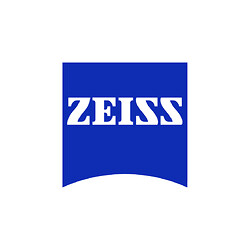A new world of measurement possibilities with ZEISS O-INSPECT
Märklin faced a challenge: growing intricacy of metal parts and electronics.
Most people who are introduced to a Märklin model train set remain fascinated for a lifetime. That explains why over half of Märklin’s customers are over age 50. Their awe has a lot to do with the train models’ imitation of the original prototype - right down to the tiniest details.
A Märklin locomotive can have up to 200 parts, even more components and a locomotive housing be provided with up to 120 individual bores. Each part, component and hole must be perfectly positioned in order for the train sets to run flawlessly. Many of the wagons and locomotives also contain sensitive electronics, creating additional quality-control challenges.
“The space inside a locomotive is very limited,” says Sven Dannenmann, head of quality management at Märklin. “The drive and the extensive electronics have to be accommodated. Every tenth of a millimeter counts. Therefore, the components must correspond exactly to the drawing in order to be able to guarantee the function and avoid short circuits. Our customers expect the models to function reliably on the tracks, without any breakdowns or interruptions, and with little maintenance.”
For more than 40 years, Märklin relied on the legendary ZEISS UMM 500 CMM for its quality assurance. But the growing intricacy of the train sets combined with the high number of parts it tests today (around 300) required a change of equipment. Märklin needed a new measuring machine that could fulfill its higher quality requirements while at the same boosting productivity on the shop floor.
The solution: the multi-sensor ZEISS O-INSPECT measuring machine with vibration insulation
Märklin found the answer in ZEISS O-INSPECT, a multi-sensor measuring machine that unites tactile and optical measurement on one device. Märklin purchased the machine in November 2021.
Of the three measuring technologies on ZEISS O-INSPECT, optical measurement is used the most. The ZEISS DotScan chromatic white light sensor measures distances, edges, and contours. ZEISS Discovery V12 camera sensor is typically utilized to examine drill holes, positions and sizes (for example, the size of a window frame).
Tactile measurement is selected when Märklin needs 100% certainty about individual measurement points or when optical measurement cannot handle a specific measurement task, such as inspecting a complete set of wheels.
“The ability to carry out various types of measurement on one device has given us new ways to investigate different types of contours and surfaces,” says Dannenmann. “We can completely test and measure whatever we need.”
Märklin placed its new ZEISS O-INSPECT directly in production. This achieves two goals: Not only can the parts and components of the models themselves be measured and inspected, but also many of the tools that are used to manufacture them, such as tools for molding inserts.
Due to the diversity of productions technologies on its shopfloor, Märklin decided to equip its new ZEISS measuring machine with an option that insulates against vibrations. “We have a high production depth, including a turning shop, electroplating, a paint shop, injection molding, stamping and casting finishing. All those vibrations would impact the measurement results,” explains Dannenmann. The vibration insulation option prevents that.
The benefits: faster inspections, precise measurement results, maximum versatility
A key advantage of ZEISS O-INSPECT, according to Dannenmann, is the ability to program the machine in combination with the 3D model. Thanks to this symbiosis, the measurement points are automatically generated and the digital information about a part is immediately available. Dannenmann and his colleagues can therefore quickly pinpoint any marginal differences in form and position and immediately correct them if necessary.
“What used to take a day to inspect can now be done in a few hours. We now have totally different possibilities to measure and see whether a part fits the 3D model or not. The clarity and focus of the of the different contours and surfaces are truly impressive.”
Another benefit: measurements can be programmed and saved on ZEISS O-INSPECT in advance, and production workers can carry out their inspections later whenever they need to. “They get their measurement results faster, which leads to faster approvals.”
ZEISS O-INSPECT has not only fulfilled Märklin’s expectations; it has exceeded them. “This new machine marks a new era for us. We are just at the beginning of our discovery, of how we can measure differently.”
